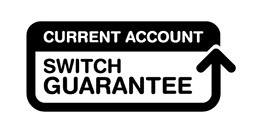
Long term savings are a good way to build up a nest egg that can provide for retirement or pay for big purchases in the future. It also provides peace of mind that you have enough money set aside to meet your financial goals.
Savings accounts are for long-term plans, and they differ from checking or savings accounts for short-term expenses, like a vacation or wedding. These accounts are usually at banks, credit unions or other financial institutions and are designed to hold the money you don't expect to need in the near future.
Your goals and time frame for investing will determine the best option. Some provide compounding interests, while other offer tax advantages. You should consider all the options available and choose one that best suits your needs, your goals and your risk tolerance.
How to Set Long-Term Objectives
The first step is to map out your long-term savings goals and develop a strategy to reach them. This will give you a better idea of how much you need to save as well as the type of account that you should use. You should separate long-term goals if you have multiples. This way, you can track your progress.

Select an investment strategy that fits your return expectations
If you want to be successful in investing, then you need to have realistic expectations about the market's long-term returns. If you have unrealistic return expectations, then you may end saving too little, or too much and not reach your goals.
To avoid making major changes too soon, you should spread out your investments over many years. This will prevent you from becoming overly concerned about any changes in performance, or making impulsive choices that could have a negative effect on your finances.
You can diversify your investment portfolio by using multiple types of long-term savings and CD accounts. These accounts vary in terms of the interest rates they offer, how much you can invest, and fees that may apply.
The most common use of long-term investment is to save up money for goals that are longer-term, such as buying a house and retiring. These investments usually have a smaller return potential than bonds or stocks, but can help you grow your wealth.
Mutual funds, exchange-traded fund (ETFs), and savings accounts are all types of investment. Each type of investment comes with its own set of risks and rewards.

IRAs are also popular as long-term investment vehicles. They offer greater tax advantages than CD and savings accounts and allow you to select from different investment types, such as exchange traded funds or mutual fund.
If you're working toward a goal that will last a while, it's important to consult with an experienced financial professional. This person can help you determine the best options for investing in your case. These professionals can assist you in determining a saving strategy and an investment plan to reach your goal.
FAQ
Do I really need an IRA
An Individual Retirement Account is a retirement account that allows you to save tax-free.
You can make after-tax contributions to an IRA so that you can increase your wealth. They provide tax breaks for any money that is withdrawn later.
IRAs are particularly useful for self-employed people or those who work for small businesses.
Many employers offer employees matching contributions that they can make to their personal accounts. Employers that offer matching contributions will help you save twice as money.
Which investments should I make to grow my money?
It is important to know what you want to do with your money. It is impossible to expect to make any money if you don't know your purpose.
It is important to generate income from multiple sources. So if one source fails you can easily find another.
Money does not come to you by accident. It takes hard work and planning. You will reap the rewards if you plan ahead and invest the time now.
What can I do with my 401k?
401Ks are great investment vehicles. They are not for everyone.
Employers offer employees two options: put the money in a traditional IRA, or leave it in company plan.
This means that you can only invest what your employer matches.
You'll also owe penalties and taxes if you take it early.
Statistics
- Some traders typically risk 2-5% of their capital based on any particular trade. (investopedia.com)
- If your stock drops 10% below its purchase price, you have the opportunity to sell that stock to someone else and still retain 90% of your risk capital. (investopedia.com)
- 0.25% management fee $0 $500 Free career counseling plus loan discounts with a qualifying deposit Up to 1 year of free management with a qualifying deposit Get a $50 customer bonus when you fund your first taxable Investment Account (nerdwallet.com)
- Over time, the index has returned about 10 percent annually. (bankrate.com)
External Links
How To
How to invest In Commodities
Investing in commodities means buying physical assets such as oil fields, mines, or plantations and then selling them at higher prices. This is known as commodity trading.
Commodity investing is based upon the assumption that an asset's value will increase if there is greater demand. The price falls when the demand for a product drops.
You want to buy something when you think the price will rise. You'd rather sell something if you believe that the market will shrink.
There are three main types of commodities investors: speculators (hedging), arbitrageurs (shorthand) and hedgers (shorthand).
A speculator buys a commodity because he thinks the price will go up. He doesn't care about whether the price drops later. One example is someone who owns bullion gold. Or someone who invests on oil futures.
An investor who buys commodities because he believes they will fall in price is a "hedger." Hedging is a way of protecting yourself from unexpected changes in the price. If you have shares in a company that produces widgets and the price drops, you may want to hedge your position with shorting (selling) certain shares. By borrowing shares from other people, you can replace them by yours and hope the price falls enough to make up the difference. When the stock is already falling, shorting shares works well.
The third type, or arbitrager, is an investor. Arbitragers trade one thing in order to obtain another. For example, if you want to purchase coffee beans you have two options: either you can buy directly from farmers or you can buy coffee futures. Futures allow you the flexibility to sell your coffee beans at a set price. While you don't have to use the coffee beans right away, you can decide whether to keep them or to sell them later.
The idea behind all this is that you can buy things now without paying more than you would later. You should buy now if you have a future need for something.
But there are risks involved in any type of investing. One risk is that commodities could drop unexpectedly. Another is that the value of your investment could decline over time. Diversifying your portfolio can help reduce these risks.
Another factor to consider is taxes. When you are planning to sell your investments you should calculate how much tax will be owed on the profits.
Capital gains tax is required for investments that are held longer than one calendar year. Capital gains taxes only apply to profits after an investment has been held for over 12 months.
You may get ordinary income if you don't plan to hold on to your investments for the long-term. Ordinary income taxes apply to earnings you earn each year.
Investing in commodities can lead to a loss of money within the first few years. However, your portfolio can grow and you can still make profit.